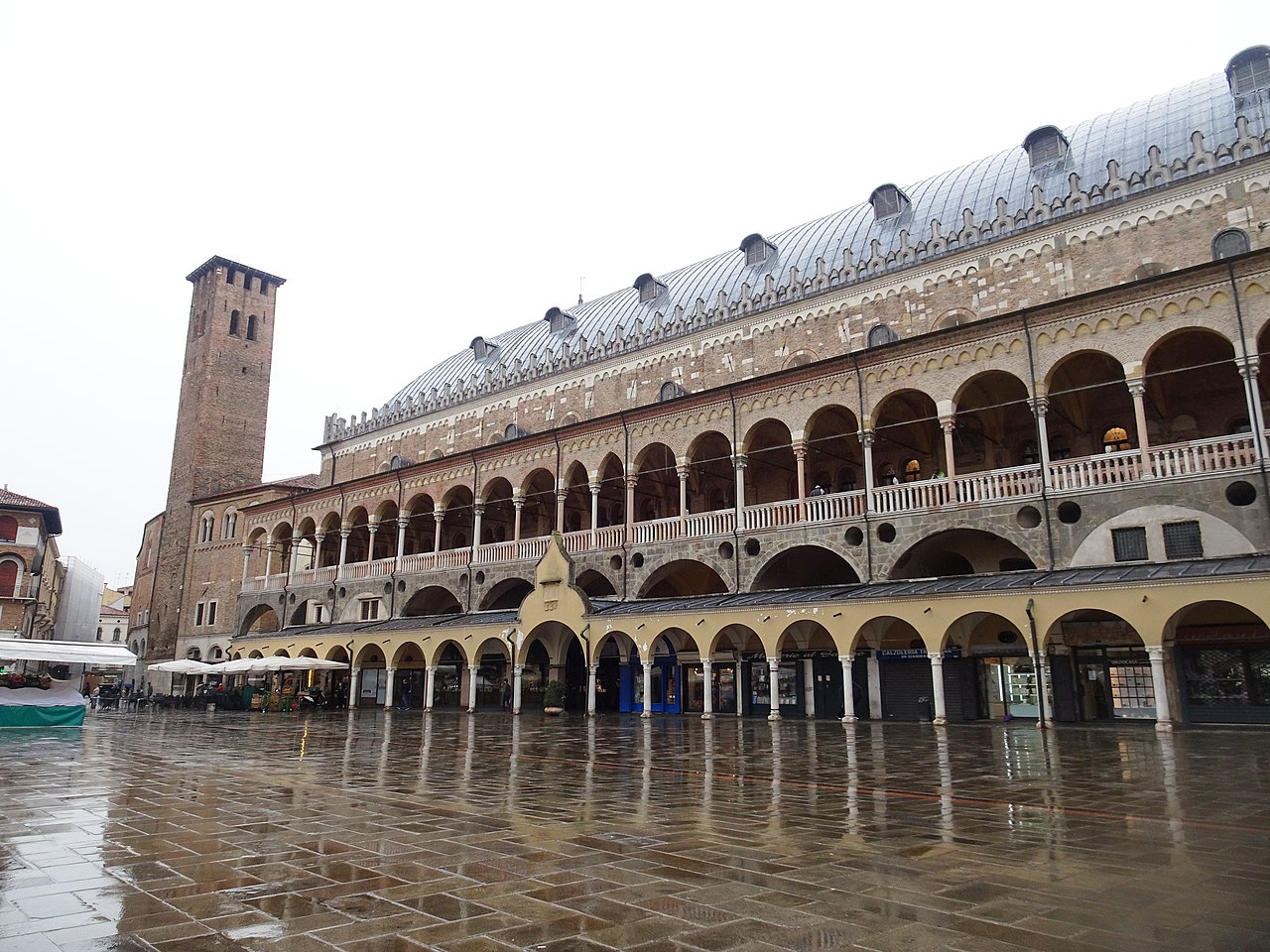
What to see in Padua and how to get there? This is a question asked by most visitors to the Italian region of the Veneto. because after Venice, which is its capital, Padua appears on all tourist itineraries in the area.
Not in vain, she is heir to the patavium and, above all, it lived through a period of great splendor in the Middle Ages, when its famous university, which is one of the oldest in the world. Numerous monuments have remained from that splendor, some declared as World Heritage. For all this, we are going to explain what to see in Padua and how to get there.
The Ragione Palace and other samples of civil architecture
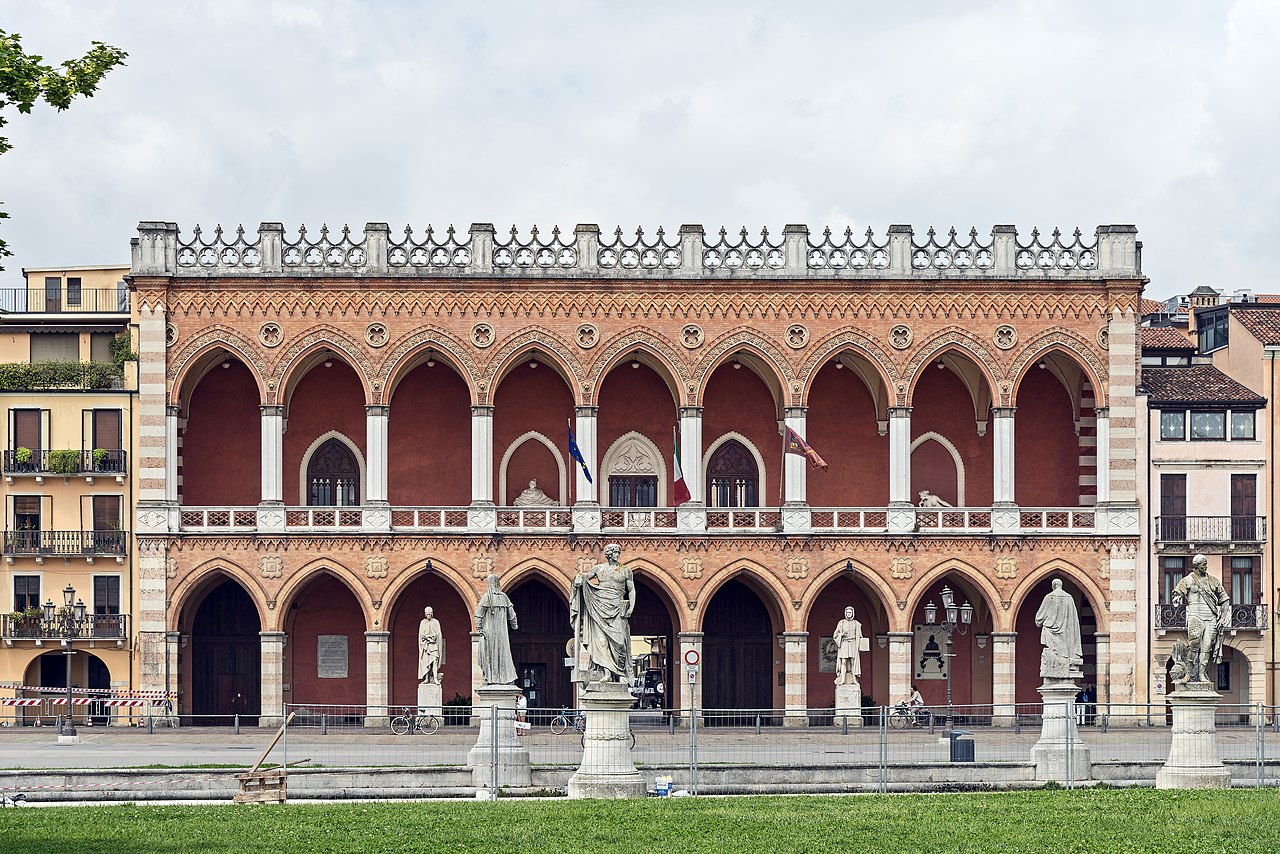
Loggia Amulea, one of the architectural jewels to see in Padua
Padua is famous for its numerous squares full of monuments and entertainment. Precisely the spectacular Palace of the Ragione or of Reason separates two of them: that of the Fruit and that of the Herbs. This construction is one of the great symbols of the city. It was built in the XNUMXth century, although it was enlarged a hundred years later.
In this last reform it was given its characteristic roof in the shape of an inverted ship's hull. In turn, thanks to this, inside it houses the monumental room, which is the largest suspended room in the world. It is 81 meters long by 27 wide and, likewise, 27 high and, as we told you, its roof is a colossal woodwork vault. Likewise, its walls are decorated with wonderful frescoes which we will talk about later.
Another characteristic element of the construction is the bissara tower, which is attached to it and which will surprise you with its magnificence. She is about eighty-two meters tall and very slender. It was built between the XNUMXth and XNUMXth centuries by the architect Andrea Pisano placeholder image. In 1378 a clock was installed that not only measures the passage of time, but also the phases of the Moon.
But this palace is not the only one you can see in Padua. In the nearby Plaza de los Señores you have the Great Guard and clock palace. Also, very close, is the palace of the captaincy, which was the residence of the governors and in which its great door stands out. We also advise you to see the Amulea Lodge, which is located in the Prato della Valle, which we will also talk about later.
We remind you that it is called logia to an exterior gallery formed by arches on columns that acts as a building façade. And that it is an architectural form that was very successful in Italy in the XNUMXth and XNUMXth centuries. So you should also know the Cornaro Lodge, which was the first entirely Renaissance construction in Padua. Finally, another spectacular artistic display of the city is the boo palace, former headquarters of the university. Also, already in the outskirts, you have classicist mansions such as Villa Pisani, Villa Molin or Villa Cotarelli, this last work of Andrea Palladio.
Prato della Valle, one of the symbols of Padua
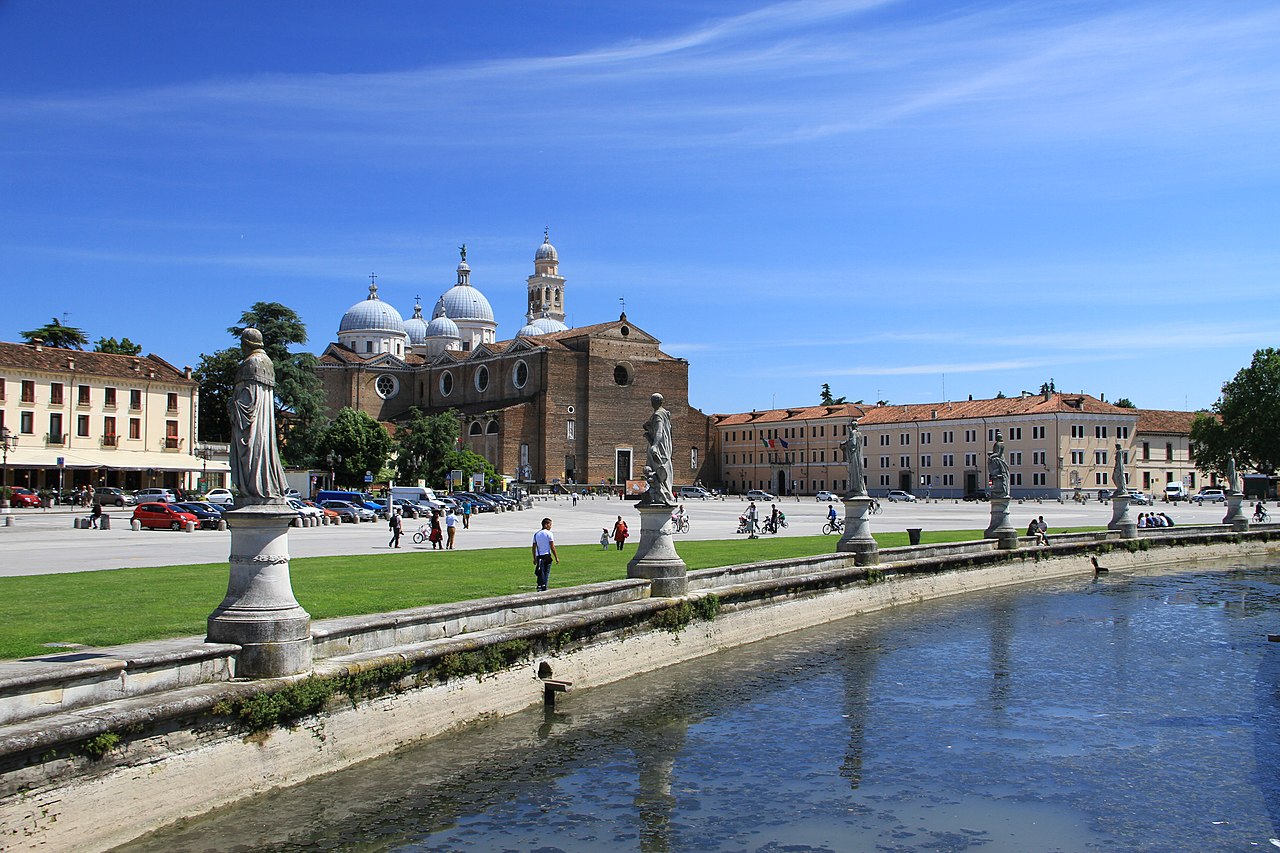
Prato della Valle in Padua
We spoke to you a few lines above about the importance of the squares in the urban structure of Padua and we also mentioned the Prato della Valle. This is the name given to one of the great symbols of the city and one of the squares largest in Europe, with approximately ninety thousand square meters.
It was built in the XNUMXth century and has an elliptical shape. In the center it has a large garden surrounded by a canal which, in turn, is adorned by rows of statues. These represent famous people of the city and one of them is dedicated to Andrea Memo, reformer of Prato (in fact, the central island is known as isola Memmia).
Precisely, when the excavations were carried out to reform the square, the remains of an old Roman Theatre. Likewise, this place is framed by numerous monumental constructions that we recommend you see. Between these, the basilicas of Santa Justina and San Antonio de Padua, which we will talk about below, and the angelli palace, which today houses the Precinema Museum.
The Cathedral of Santa Maria and other religious buildings to see in Padua
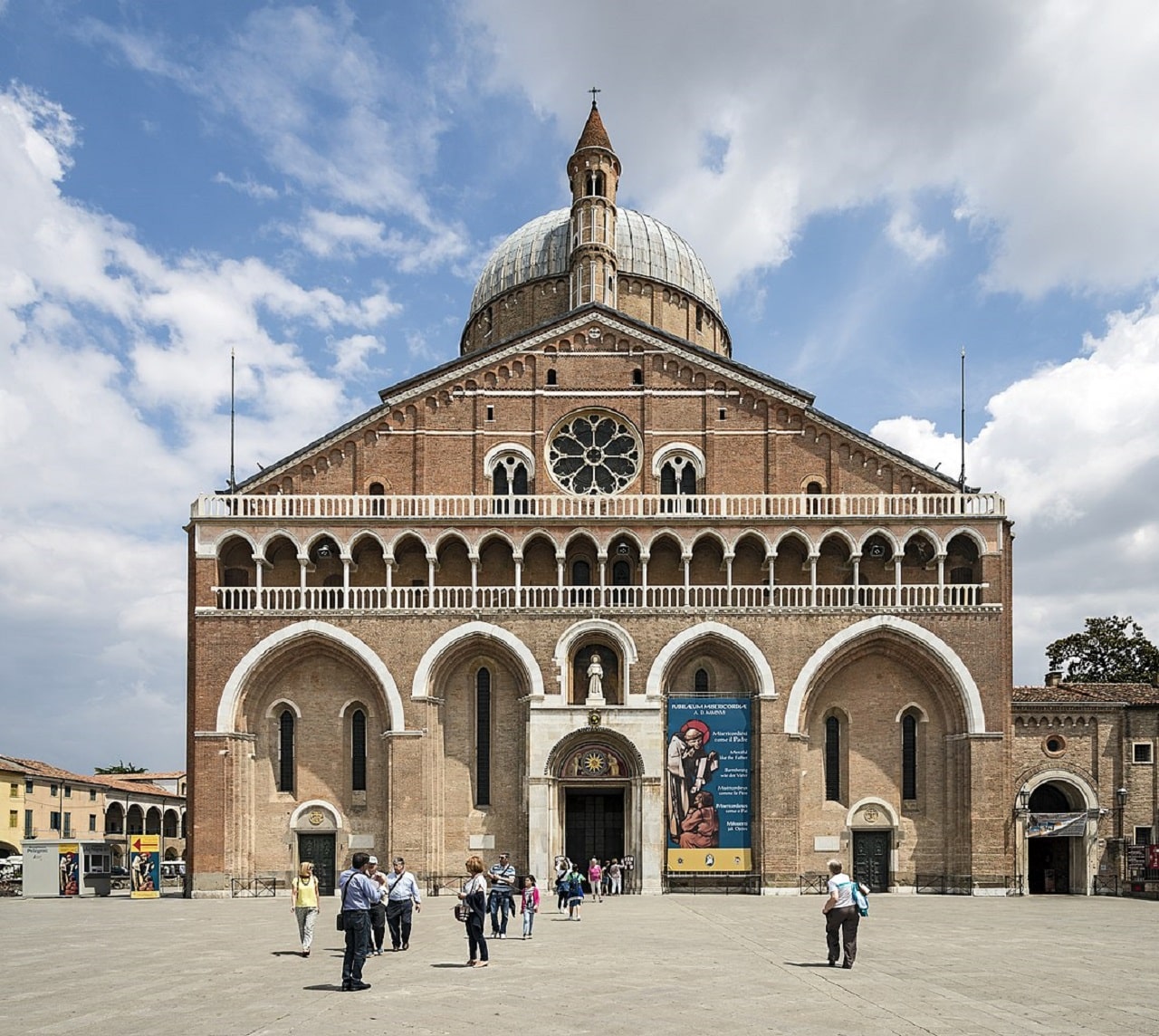
Basilica of Saint Anthony of Padua
If the civil heritage of this city is spectacular, the religious one is no less so. We are now going to give it the space it deserves in this text about what to see in Padua and how to get there. Highlights in it Cathedral of Saint Mary of the Assumption, a Renaissance building due to andrea del valle, although it was not finished until the XNUMXth century and, even so, its façade remained unfinished. For this reason, it also has baroque elements.
However, perhaps more impressive is the basilica of san giustina which, as we told you, is in the Prato della Valle. It was built in the XNUMXth century following the same canons of baroque on a previous temple. Its enormous dimensions of 122 meters long by 82 meters wide will catch your attention. But, above all, its beautiful domes and its exuberant interior.
Very close to this is the no less beautiful Basilica of Saint Anthony of Padua, which was built between the XNUMXth and XNUMXth centuries and is known by the Paduans as "il Santo". However, it has been growing over time and adding styles to its architecture. Thus, the façade is Romanesque, the Byzantine-Venetian domes and the Gothic and Baroque interior.
On his altar are preserved various bronze sculptures by Donatello. But more spectacular is the equestrian monument to Gattamelata, work of the same and located in front of the basilica. It is considered one of the best equestrian statues of the entire Renaissance. But, returning to the interior, you will not get tired of seeing wonders. Among these, the Trombetta and Caimo monuments, the impressive chapels of Saint Felice and Blessed Luca Belludi or astral clock.
Finally, you have many other religious monuments to see in Padua. Thus, the churches of the hermits, which combines Romanesque and Gothic, and Hagia Sophia, which is perhaps the oldest in the city, since it dates from the XNUMXth century; he Oratory of Saint George of Padua, decorated with frescoes of Altichiero da Zevio, or the Scrovegni chapel, which dates from the XNUMXth century and is also decorated with frescoes, in this case by Giotto.
The series of frescoes of the XNUMXth century
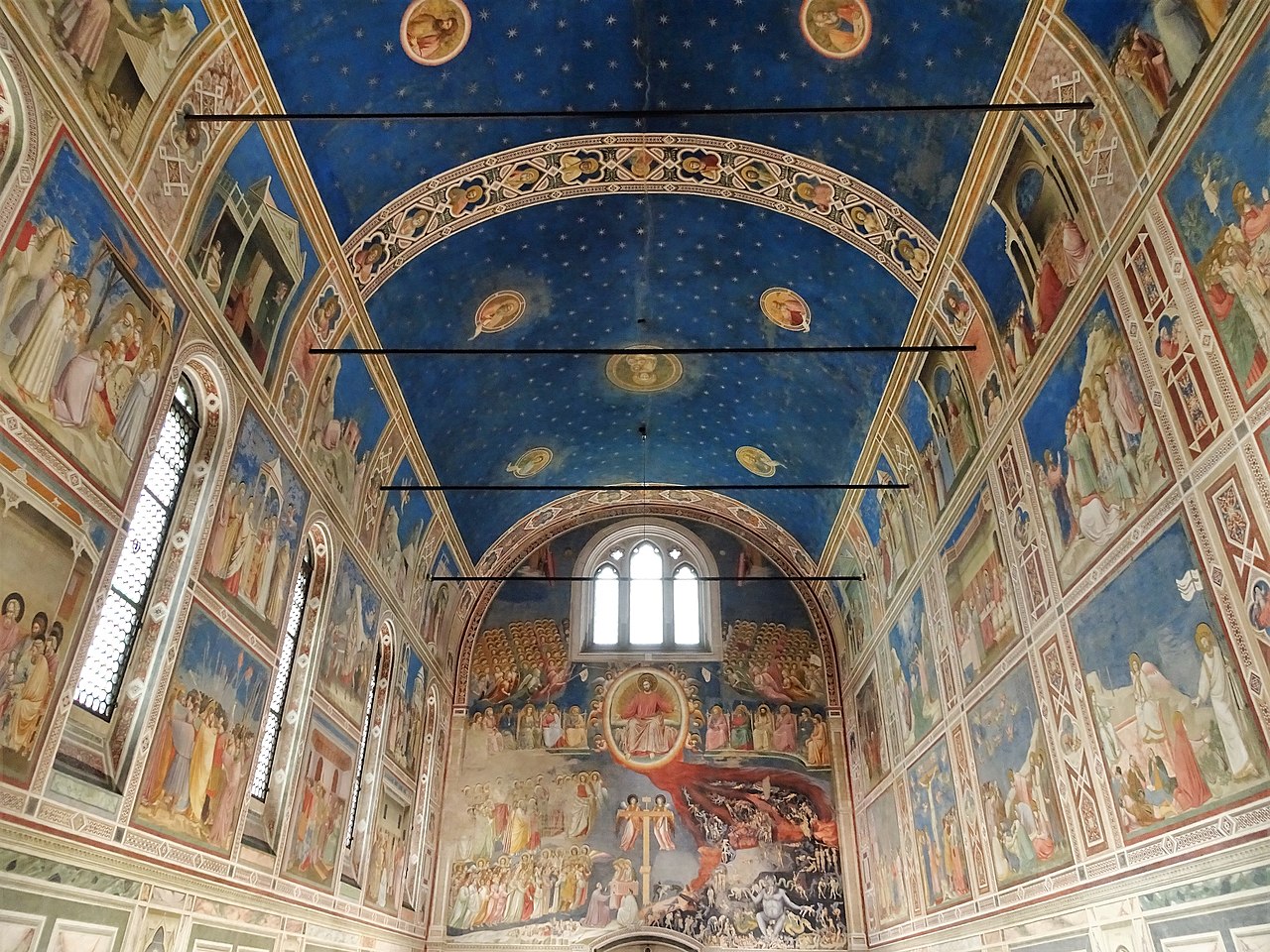
Giotto's frescoes in the Scrovegni Chapel
At the beginning, we told you that this city in Veneto has two properties classified as world heritage. Therefore, we have to refer to them in this article about what to see in Padua and how to get there. One is made up of the calls XNUMXth century fresco series, which are of incalculable value. These are various pictorial groups scattered around the most representative buildings in the city. Among them, many of which we have mentioned, such as the hall of the Palazzo de la Ragione, the Basilica of San Antonio or the Scrovegni chapel itself.
These wonderful paintings are the work of some of the most important artists in the history of mural art on the Italian peninsula. Among these, the aforementioned Giotto y Altichiero da Zavia, and James of Verona, Guariento di Arpo, Jacopo Avanzi o Giusto de Menabuoi.
Despite this variety of authors, all the frescoes were painted between 1302 and 1397 and present unity of style and content. However, they show the evolution of wall painting throughout that century. Therefore, observing them, we not only have the privilege of seeing great works of art, but also of verifying how advances in optics and the representation of emotions were introduced into the works.
The Botanical Ortho

The Botanical Garden of Padua
Together with the previous one, this is the other wonder of Padua that holds the rank of World Heritage. As its name indicates, it is a Botanical Garden created in 1545 by the university. In fact, it is one of the first to be installed in the world. Its initial responsibility was the doctor luigi sqalermo, who used it to show the main medicinal plants to his students.
However, later, many other species were introduced. Thus, aquatic plants, insectivorous or representative of the triveneto. Over time, the garden was used to introduce others hitherto unknown to the Italian peninsula. For example, gingko biloba, jasmine or magnolia. Among its most representative pieces, you can see a copy of palm of san pedro which was planted in 1585.
The Botanical Installation of Padua has twenty-two thousand square meters protected by a wall. In the center, it has a pond for aquatic species that is supplied by an underground layer of hot water. And, around this, are the rest of the plants. In total, it has about six thousand species coming from all over the world.
How to get to Padua
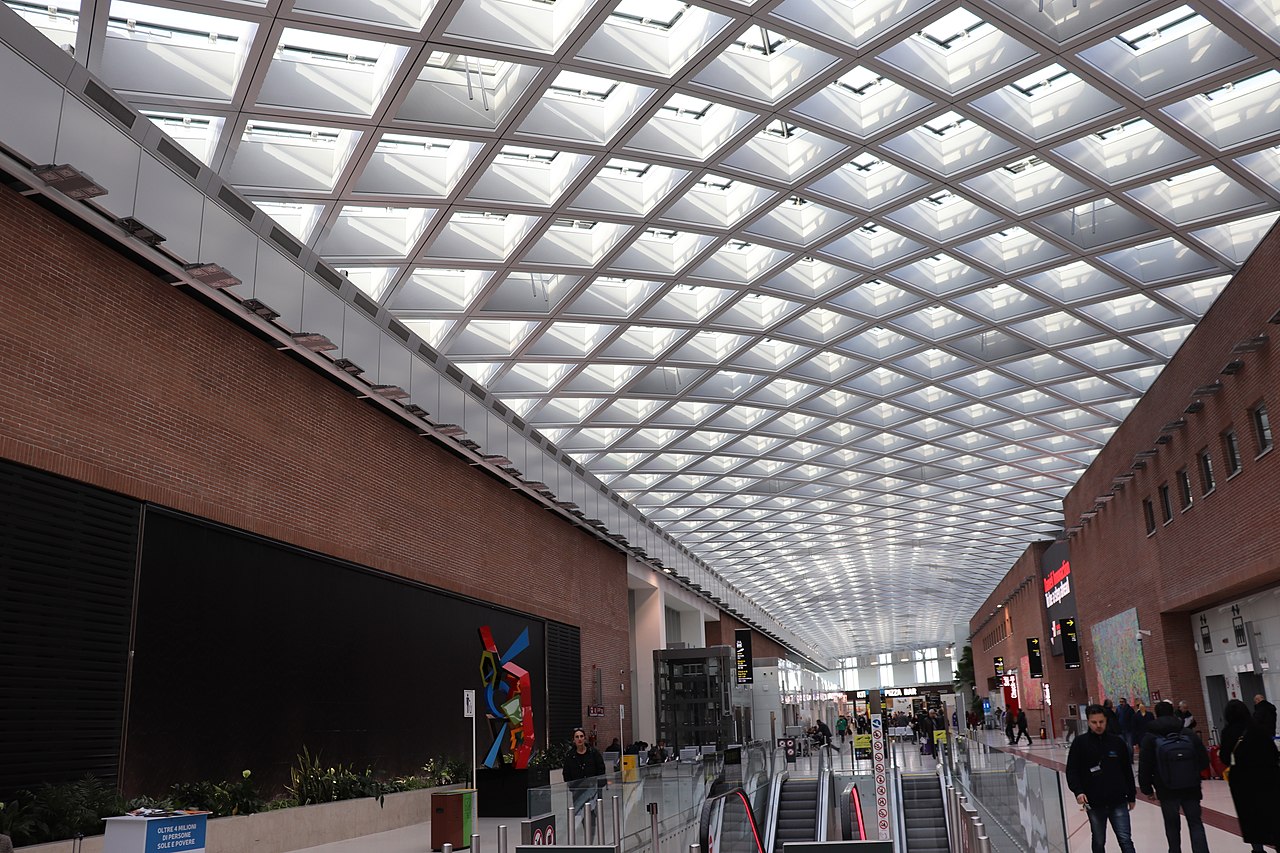
Venice Marco Polo International Airport
Our article is entitled what to see in Padua and how to get there. Therefore, once we have shown you its main monuments, we are going to explain how you can travel to the city of Veneto. First of all, you should know that Padua does not have a commercial airport. The closest is that of Venice-Marco Polo.
From this city, which is the capital of the region, the best way to travel is by the train. It only takes about twenty-five minutes. The convoys leave from the Venetian station of Santa Lucía and its price is around four euros. You also have a high-speed rail, but for such a short distance, it's not worth it and, moreover, it costs almost twenty euros.
Also, you can scroll by highway. In this case, there are about fifty kilometers and the fastest route is the A-4, popularly known as the Serenissima, no way from Venice to Milan. This last city is 245 kilometers from Padua and is also connected to it by railway. We can tell you the same if you are in Roma. It's almost five hundred kilometers and the train takes about three and a half hours. As for its price, it is around one hundred euros, but you can get cheaper rates.
In conclusion, we have shown you what to see in Padua and how to get there. You have been able to appreciate that this beautiful city so close to Venice. In fact, if you travel to the region, you must also visit the latter, even more famous, but no less impressive. Come and discover this beautiful area of Italy.